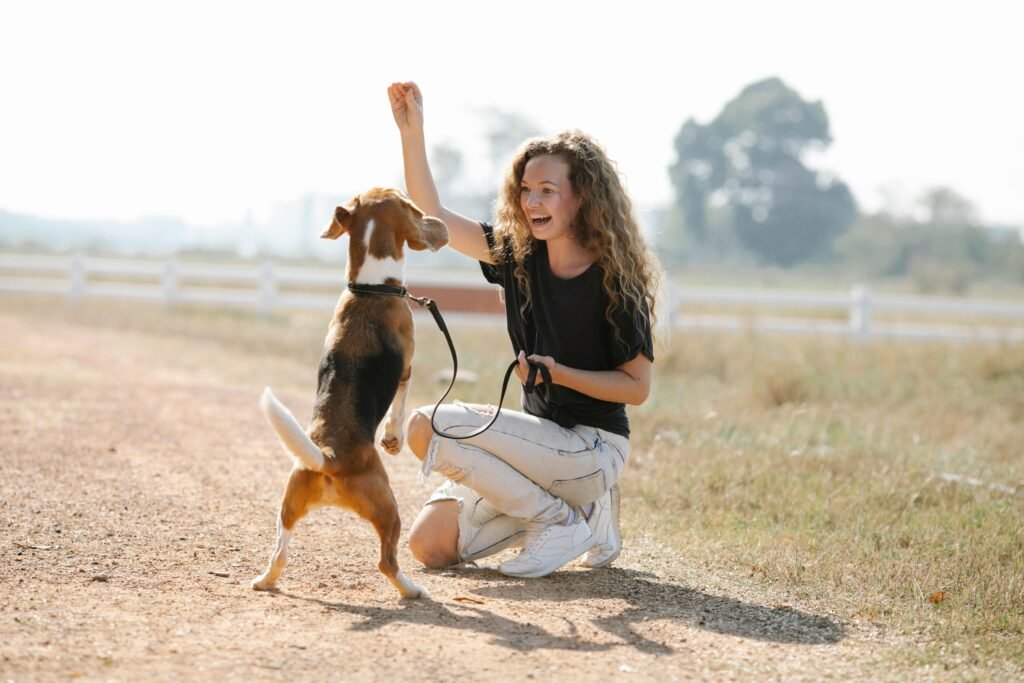Do you love your dog, but sometimes his energy and lack of focus challenge the harmony of your home? Dog obedience training isn’t just about teaching tricks; it’s about building deep communication and a trusting relationship with your four-legged companion. For Americans who value a warm, functional home, investing in dog obedience training is investing in peace and happiness for the entire family, including the pets.
A well-trained dog is a happier, more integrated member of the family. Your dog feels secure knowing what to expect, and you enjoy a calmer, more organized home. Whether you’re a first-time dog owner or a seasoned dog lover, understanding the principles of dog obedience training will open a new chapter in your relationship.

Why Dog Obedience Training is Essential for a Happy Home
Dog obedience training goes far beyond basic commands like “sit” and “stay.” It offers a series of benefits that directly impact your dog’s quality of life and the atmosphere of your home:
- Safety: A dog that responds to the call and knows to “stay” is safer in many situations, preventing escapes or risky behavior.
- Clear Communication: Training establishes an effective communication system between you and your dog, reducing frustration for both of you.
- Reduction of Behavioral Problems: Many problems such as excessive barking, destruction of objects and aggression can be significantly minimized with proper dog obedience training.
- Strengthening the Bond: Training sessions are moments of interaction and mutual learning, strengthening the bond between you and your dog.
- Social Integration: A well-trained dog is more apt to interact positively with other animals and people, making walks and visits easier.
- Dog Well-Being: Mentally stimulated dogs with clear routines tend to be happier and more balanced.
For American homes, where dogs are often considered true members of the family, investing in dog obedience training demonstrates care and responsibility, contributing to a more harmonious home environment.
Choosing the Right Approach to Dog Obedience Training
There are several approaches to dog obedience training, and the best choice will depend on your dog’s personality, your availability, and your goals. Some popular options include:
- Group Classes: Great for socialization and learning basic commands in a controlled environment.
- Individual Classes: Allow for greater focus on your dog’s specific needs and challenges.
- Home Training: Ideal for owners with the time and knowledge to apply techniques consistently.
- Training Schools: More intensive programs, which can be residential or with regular classes.
When choosing an approach to dog obedience training, consider your dog’s age, breed, and temperament. Puppies, for example, benefit from early socialization, while older dogs may need patience and adapted methods.
Dicas Práticas para um Dog Obedience Training Eficaz
Successfully implementing dog obedience training requires consistency, patience, and the use of positive methods. Here are some practical tips to get you started:
- Start Early: The earlier you start dog obedience training, the easier it will be for your dog to learn and for you to establish house rules.
- Use Positive Reinforcement: Reward desired behaviors with treats, praise, and affection. Avoid punishment, which can create fear and anxiety.
- Be Consistent: All family members should use the same commands and rules to avoid confusion in the dog.
- Keep Sessions Short and Fun: Short (5-10 minutes) and fun training sessions keep your dog interested.
- Be Patient: Every dog learns at his or her own pace. Celebrate small improvements and don’t get discouraged by challenges.
- Generalize Commands: Practice commands in different environments and situations so that your dog responds consistently.
- Incorporate Training into Daily Routine: Take advantage of walks, playtime, and mealtimes to reinforce commands.
Remember that dog obedience training is an ongoing journey. Even after you’ve achieved your initial goals, continue practicing and reinforcing commands to keep your dog engaged and well-behaved.
Helpful Tools and Resources for Dog Obedience Training
To assist with your dog obedience training, there are several tools and resources available to the American public:
- Training Treats: Small, tasty treats that are ideal for quickly rewarding desired behaviors.
- Appropriate Collars and Leashes: Choose comfortable, safe equipment for walks and training sessions.
- Clicker: A device that emits a short, distinct sound, used to signal the exact moment of desired behavior.
- Books and Online Courses: Offer step-by-step guides and tips from dog obedience training experts.
- Training Apps: Some apps offer personalized training programs and progress tracking.
Investing in quality resources can make the dog obedience training process more effective and enjoyable for both you and your dog.
For effective and proven dog obedience training, we recommend our online course. [Read our detailed article on why it’s right for you.]

Solving Common Challenges in Dog Obedience Training
It is common to encounter some challenges during the dog obedience training process. Knowing how to deal with them is essential for success:
- Lack of attention: Train in an environment with few distractions and use high-value treats to keep your dog focused.
- Stubbornness: Be consistent and patient. If your dog isn’t responding, try simplifying the command or changing the environment.
- Regression: It’s normal for dogs to forget some commands. Re-practice the basics and reward success.
- Specific issues: If you’re dealing with complex behavioral issues, such as aggression or separation anxiety, seek help from a professional trainer with experience in dog obedience training.
Integrating Dog Obedience Training into the American Lifestyle
For the American public, who often lead an active lifestyle and value the company of their pets in various activities, dog obedience training is essential. A well-trained dog can accompany you to parks, trails and even pet-friendly establishments, enriching your experiences and strengthening the bond between you.
In addition, American homes prioritize organization and functionality. A dog that has undergone proper dog obedience training contributes to a cleaner and safer environment, preventing accidents and destructive behavior.
Investing in dog obedience training is, therefore, an investment in your dog’s well-being and in the quality of life of the entire family, aligning with the values of a welcoming and harmonious American home.
Conclusion: Invest in the Transformative Power of Dog Obedience Training
Dog obedience training is a rewarding journey that transforms the relationship between you and your dog, fostering a happier, safer, and more harmonious home. By dedicating time and effort to training your companion, you not only teach commands, but you build a foundation of communication, trust, and lasting love. For the American public who values welcoming homes and the integration of pets into the family, dog obedience training is an essential step toward a fulfilling and happy coexistence.


